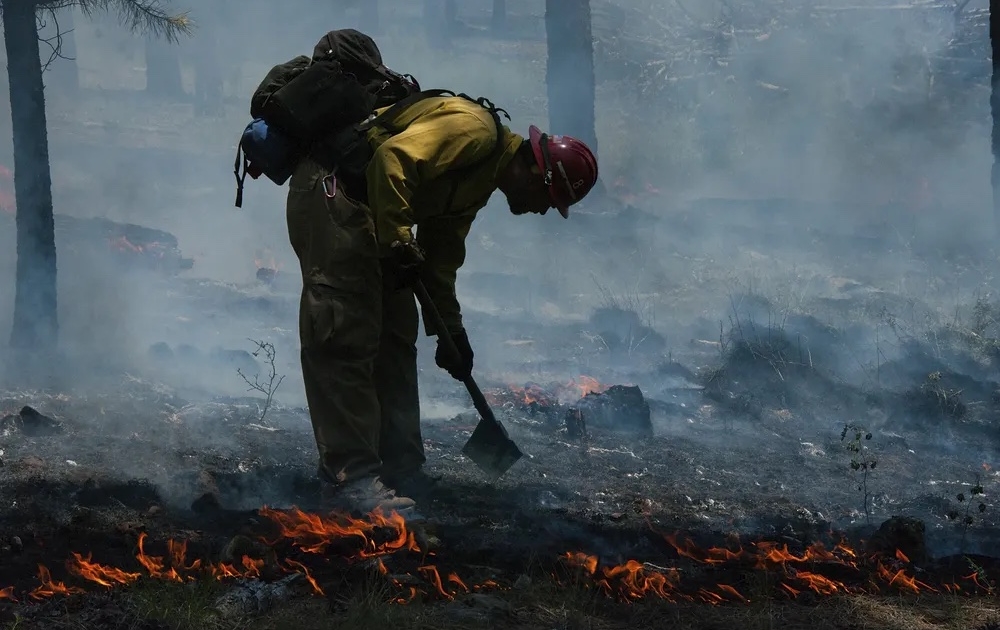Wildfires in Brazil Worsen Poverty

In 2019, the number of wildfires in Brazil doubled. Today, Brazil ranks first as the country with the most wildfires. Precipitated by deforestation, these wildfires threaten ecosystems as well as indigenous communities, farms, and living spaces. Thousands of farmers have lost their jobs due to the wildfires. Even worse, the fires have destroyed homes and pushed more people into poverty.
Causes
“There is no doubt that this rise in fire activity is associated with a sharp rise in deforestation,” Paulo Artaxo, an atmospheric physicist at the University of Sao Paulo, said. After chopping down trees, loggers set fires to clear the forest. These fires are not initially dangerous and in fact, are effective in killing excess vegetation. However, they often reignite later and percolate into other forests.
Wildfires in Brazil occur most prevalently in municipalities with heavy deforestation. Making matters worse is the fact that these municipalities are large – some being the size of small European countries. Five decades of Brazilian incentives to colonize the Amazon have inclined businesses to push into indigenous land, destroy forests and increase beef production.
In the first half of 2022, 3,980 square kilometers of the Amazon — an area five times larger than New York City — was cleared. Historically, the excess moisture in Brazil’s forests kept wildfires at bay. But due to climate change and deforestation, the rainforests are becoming drier, creating the perfect environment for fires. The cascading smoke and flames in Brazil not only increase climate change but are a clear indication of its consequences.
Economic and Societal Impact
Brazil has the highest frequency of wildfires in all of South America by far. The economic impact that these fires caused is substantial. These fires affect infrastructure, agriculture and forestry and compromise water sources. Furthermore, wildfires disrupt agricultural practices and push farmers into poverty. The fires also ravage crops and destroy farming homes. This is concerning as there are more than 98,000 agricultural businesses in Brazil. As wildfires increase, hundreds of thousands of farmers and their families are at serious risk of economic despair.
Studies have shown that regions with moderate to high wildfire risk tend to have greater levels of poverty. In Brazil, fire-induced poverty concentrates within indigenous communities. Fires disproportionately affect protected lands that indigenous people inhabited. Indigenous groups, however, rely entirely on the forest to meet their food, medicine and shelter needs. Atenor Vaz, an expert on isolated indigenous groups, stated that “Their culture is entirely based on the forest. If it catches on fire, there is no one to help… Food sovereignty is drastically reduced.”
In June 2022, the number of wildfires hit a 15-year high and is only predicted to increase — along with severe consequences for native communities. With reduced forestland, communities benefit less from natural ecosystem resources, thus damaging agricultural industries and increasing poverty across the board.
The physical health impact of the fires is also staggering. In 2019, it was estimated that nearly 5,000 premature deaths in Brazil were due to smoke exposure. Additionally, the toxic smoke from the wildfires is afflicting millions with chronic lung damage. This further immobilizes the Brazilian workforce and worsens unemployment.
Active Solutions
The good news is that many scientists and politicians are developing solutions to mitigate these surges of wildfires. Scientists are creating methods to detect wildfire eruptions early on. Statistics from temperature measuring, rainfall and time of year help people predict and react to wildfires. These predictions are largely accurate and lessen the severity of wildfires before and after they start.
Alternatively, farmers have also found ways to leverage fire to help their crops. If used properly, fire can do the work of pesticides, fertilizers and laborers all for free. This encourages farmers to keep fires from destroying crops while making the most of a restrained fire to reduce the use of pesticides.
Finally, according to a study published in ScienceDirect.com, “Policies favoring fire risk mitigation reduce degradation, CO2 emissions and poverty.” So far, the Brazilian government has used the military to mitigate wildfires while also banning unnecessary fires. This, however, falls short of a ban on deforestation — the primary cause. Without significantly decreasing deforestation, wildfires in Brazil will continue to grow and multiply.
Meanwhile, the U.S. Forest Service and USAID are partnering with Brazil Forest Management and Fire Prevention. They are planning to launch a five-year program to manage forest fires and facilitate the sustainable use of public land in Brazil. More importantly, this plan will promote indigenous rights and protection.
The heightened occurrence of wildfires in Brazil has pushed thousands of farmers, indigenous groups and residents into poverty and homelessness. Targeting the root cause of the issue — deforestation — and muting ongoing fires should be at the forefront of Brazil’s agenda.
– Ashwin Telang
Photo: Rawpixel
